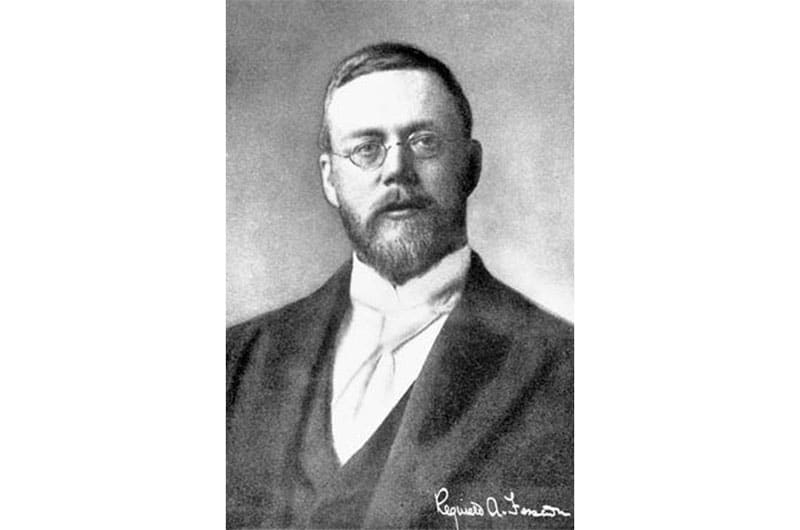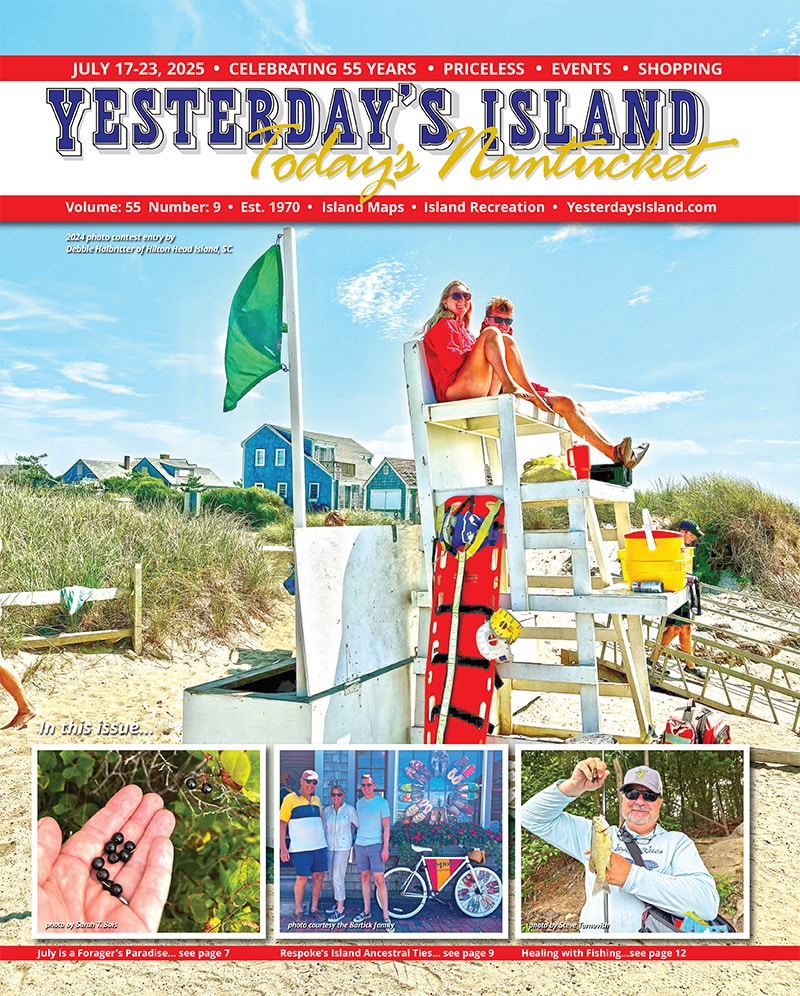~ by Amy Jenness, author of On This Day in Nantucket History, available at Mitchell’s Book Corner ~
On August 21, 1901 the U.S. Weather Bureau sent electrical expert Reginald A. Fessenden to Nantucket to study and conduct experiments at the new ‘Sconset Marconi wireless station. The station, which communicated with ships and the Nantucket Lightship 42 miles away using Morse Code, was revolutionary new technology when the stations went online on August 12, 1901.
Americans took note of Italian inventor Guglielmo Marconi’s success in Italy and Great Britain using his new wireless technology to report on yacht races and maritime disasters. James Gordon Bennett, New York Herald publisher, recognized its value and the newspaper used Marconi radios to report on the 1899 America’s Cup race off the coast of New York City. Convinced it would improve the paper’s ability to report maritime news, the newspaper set up Marconi wirelesses in ‘Sconset, on the Nantucket Lightship, and on the west coast of Ireland. Nantucket Lightship operators could now receive information from luxuryliners bound for New York City from Europe. That information was then relayed to ‘Sconset whose operators telephoned it to the newspaper.
But Marconi was not the only inventor making giant leaps in radio technology. In 1899 the Light House Board, which was responsible for lightships until World War I, negotiated with Serbian American inventor Nikola Tesla to establish wireless service on the Nantucket Lightship. The two sides negotiated into 1900 with neither party able to reach an agreement. The Light House Board even offered Tesla the contract, but he never signed it.
Reginald A. Fessenden, a Canadian inventor who had worked for Thomas Edison and was head of the electrical engineering department at Western Pennsylvania University, was hired by the U.S. Weather Bureau in 1900. The bureau asked him to create a network of stations which could transmit weather information using radio technology instead of telegraphed cables.
Fessenden had been hearing reports of Marconi’s system for a number of years and believed he could create a better version which had a longer range and transmitted the human voice. Funded by the US government, he quickly made improvements in the technology and in December of 1900 Fessenden successfully broadcast a spoken word for the first time.
Fessenden and the US Weather Bureau parted company in 1902 over a dispute over ownership of his patents. Eventually Fessenden received backing from General Electric, and, on Christmas Eve in 1906, he broadcast from Brant Rock, Massachusetts what is believed to be the first radio broadcast meant to entertain listeners. It included music and Bible selections. That same year the New York Herald sold its Sconset wireless station to the Marconi Company. The Nantucket site would be one of the company’s most important stations. It expanded and installed a larger wireless version in 1904. A fire destroyed the station in 1907, Marconi rebuilt and would operate it until World War I.
In 1909, a young David Sarnoff, the Belarusian American pioneer of American radio and television, lived in ‘Sconset and trained as a Marconi radio operator. Sarnoff rose from office boy to commercial manager and later to president of RCA. While at the Marconi Company, Sarnoff saw that radio technology had the potential to broadcast to masses of people, not just from one point to another and eventually was able to test his idea in 1921. More than 300,000 people listened to a boxing match, and large scale broadcast radio was born. In 1926, the company purchased a radio station and formed NBC. By 1930, Sarnoff was RCA president.
Brash and ambitious, Sarnoff negotiated the purchase of the Victor Talking Machine Company, which made records, and set the company up to manufacture both radios and records. By 1936, under Sarnoff’s direction, RCA spent $50 million to develop television technology, which put the company in a position to dominate television sales in the post–World War II years.
Established to help report the news, the ‘Sconset station quickly became valued in the first decade of the 20th Century for helping vessels in distress and saving lives as more and more ships had wireless systems onboard. On January 23, 1909, two ocean liners collided in dense fog sixty miles south of Nantucket. The station’s radio operator Jack Irwin picked up the call for help and sent messages to boats and naval stations nearby to assist. Almost everyone was saved and that dramatic rescue prompted the US Congress to pass a law in 1910 that required wireless radios on all American ships with more than fifty passengers on routes longer than two hundred miles.
On the night of April 14, 1912, ‘Sconset radio operator Matt Tierney was the first American to receive distress signals from the sinking Titanic. He immediately alerted all other stations of the tragedy and worked continuously for days helping assist in the rescue of the great luxury liner’s survivors.
Yet, despite its importance, the Marconi Company was forced to close its Sconset station in 1914 because of alleged neutrality laws. The company fought the charge, but the station re-opened six months later under the command of the U.S. Navy. In addition, in 1917 ownership and operation of all lightships was transferred to the US Navy,
The Navy operated the Sconset wireless station throughout the war and closed it soon after the war ended. But the Marconi Company still believed a Sconset station had value and opened a new, larger site with state-of-the-art equipment in 1920 near the Sankaty Golf Club. A year and a half later that station closed and the storied history of Nantucket’s contribution to radio technology ended.



